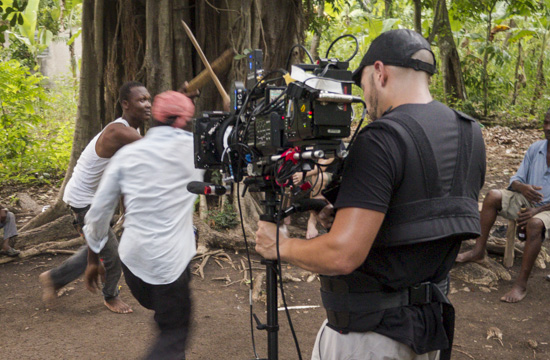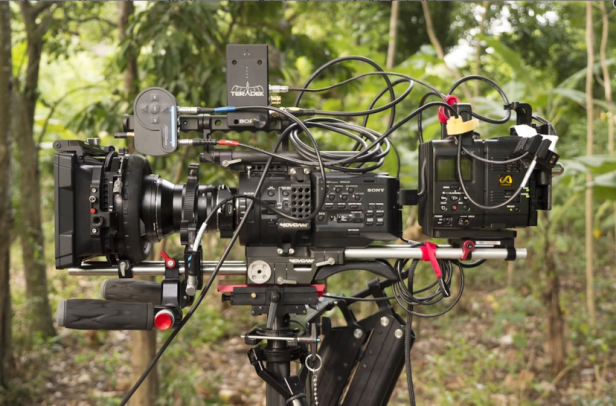
He discusses some of the process that went into the team's choice of the Sony FS700:
"Deciding on the camera package was simple. Capturing unlimited slow motion at 120 or 240 FPS without battling or pausing for a buffer was the main priority. 4K 12 bit was a plus and I needed to use a rig that I could operate with that required very little assistance in the field. At the time, I had just upgraded my??Sony FS700. We quickly searched for the new IFR5 and R5 recorder which provided the slow motion functionality for the upgraded FS700.
I turned to AbelCine in NYC for assistance on a camera system that was relatively foreign at the time. Our camera checkout was educational. The rig was tricked out to work with my Glidecam X22, SmallHD AC7 screen (that I used on the bottom of my sled), and an HD-SDI Teradeck Bolt. The IFR5 received the only dedicated SDI single from the back of the camera and I webbed together an HDMI / AJA distribution system to feed all my other needs."

In a country that was still in the process of recovering from the devastating earthquake four years ago, power management, properly handling media, and even something like transporting the camera package from place to place required some creative solutions. But, after his adventure in Haiti, Richard says he has learned a lot:
"Looking back at this production I can say that I learned a tremendous amount on the shoot. The logistical planning combined with managing my own personal expectations for the look clashed with the practicality of a situation, and the flexibility one must embrace while working in a foreign country."
You can read the rest of Richard's article and see more photos of his gear over at NoFilmSchool. Also, make sure to check out the Kickstarter page for Papa Machete to learn more about the documentary.
















